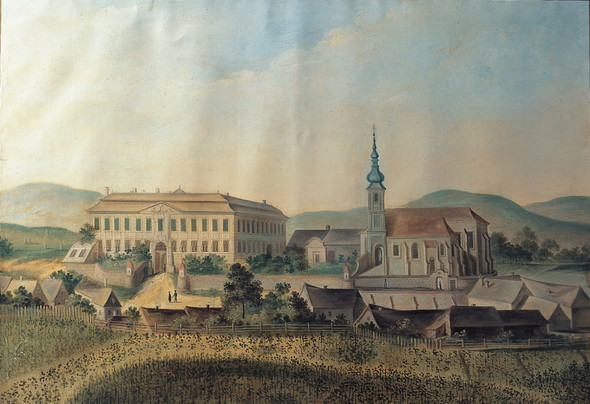It’s not often you have the chance to attend an 850-year anniversary bash and especially not in such aristocratic surroundings as an 18th-century Austrian castle and with such special wines. However, the Single Vineyard Summit in Grafenegg in September afforded me the chance to join in the celebrations at Schloss Gobelsburg winery in the Kamptal in Lower Austria.
So how can a winery boast such ancient roots? Well, the Schloss Gobelsburg winery is inextricably linked with the Cistercian Zwettl Abbey, with the monks receiving their first vineyards in 1171 in the Heiligenstein and Gaisberg vineyards, hence 850 years ago, while the castle itself and its vineyards were acquired by the Cistercians in 1740 and winemaking was transferred there in 1786. The monks managed the estate for centuries until Michael and Eva Moosbrugger were entrusted with the management of the winery in 1996. Michael Moosbrugger is not only the driving force behind the Österreiche Traditionsweingüter association and its relentless quest to classify Austria’s vineyards but is also responsible for developing Schloss Gobelsburg into one of Austria’s most important and internationally renowned wineries, recipient of numerous awards.
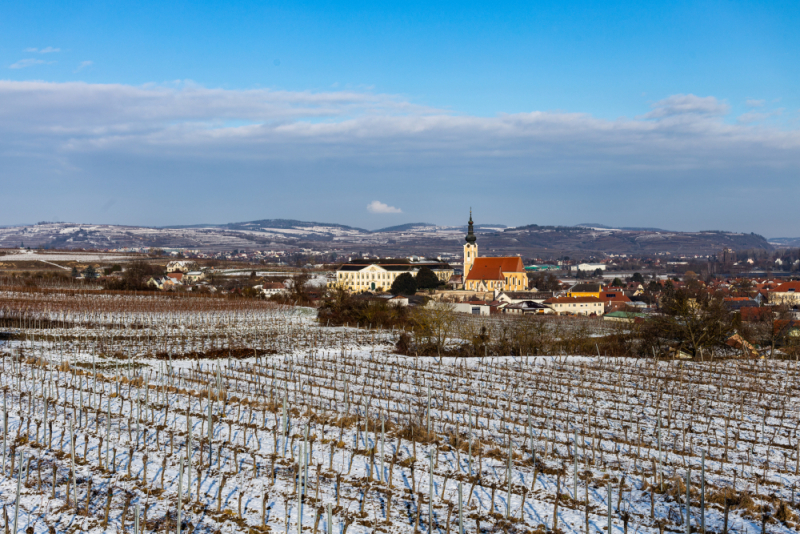
Extraordinary new barrel ageing cellar
However, the winery is not only celebrating 850 years of winemaking this year but also the completion of its stunning new barrel cellar, inaugurated in 2021 after three years of construction. I visited the castle several years ago, but they were in the throes of building work at that time, so I did not get to visit the cellars. This was my chance to see the ancient cellars, now combined with a new barrel room. The Moosbruggers have created an extraordinary barrel storage space, which beautifully balances the historic spirit of the building yet ensures they are also considering the future. Michael is nothing if not forward-thinking. He anticipates the vineyard classification taking some decades, while his instructions to the architect designing the cellar is that it should be something that would endure for at least 500 years. It is currently used for barrel ageing of wines as well as storing their older vintages, some of which we would be invited to enjoy upstairs in the castle later.
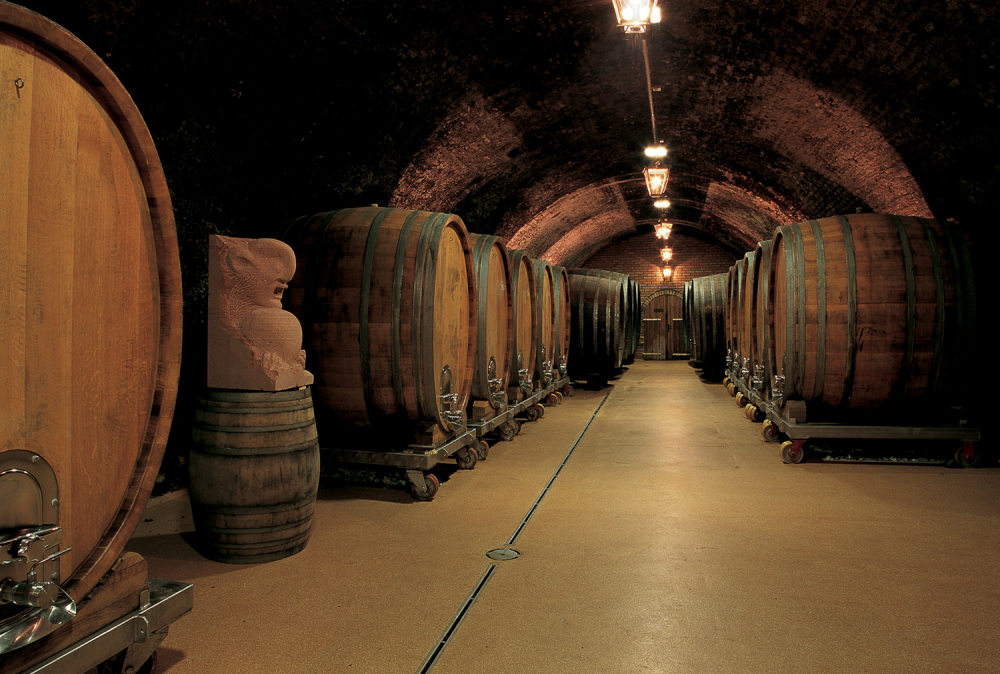
In keeping with the spirit of the winery’s Cistercian founders, it was designed in the form of a cloister, with a fountain at its centre, Latin inscriptions adorning the walls and a glass ceiling ensuring the space is also flooded with light and air. A calming space for contemplation and for the wines to rest, age and quietly develop greater complexity.
Wines that age gracefully
They have also created a beautiful, spacious garden above the new cellar, planted with cherry trees and plantains, where we enjoyed a magnificent, leisurely dinner with views over to the nearby vineyards, some of Austria’s finest, where of course Schloss Gobelsburg also owns vines, terraced Ried Heiligenstein, Gaisberg and Grub. Current vintages were served with the meal, but there was also the chance to head inside the castle itself to the ‘bar’. And what a bar! Oysters were at hand as starters, while a generous selection of older wines from the castle cellars were opened throughout the evening. And what a treat these were, served in elegant decanters, we could sample, among others, Riesling Heiligenstein 2001, 2010, 2012, Tradition Riesling 2008, 2006 2004, various vintages of Grüner Veltliner Lamm, including 2011 and 2006, Pinot Noir ‘Alte Haide’ 2011, Zweigelt ‘Haide 2010 and St Laurent ‘Haidegrund’ 2009, Riesling Auslese 2011 and Grüner Veltliner Eiswein 2010. All of which were in exceptional condition. Apparently, there were several more of these fantastic celebratory events, so I’m sure a small dent was made in their old wines collection!
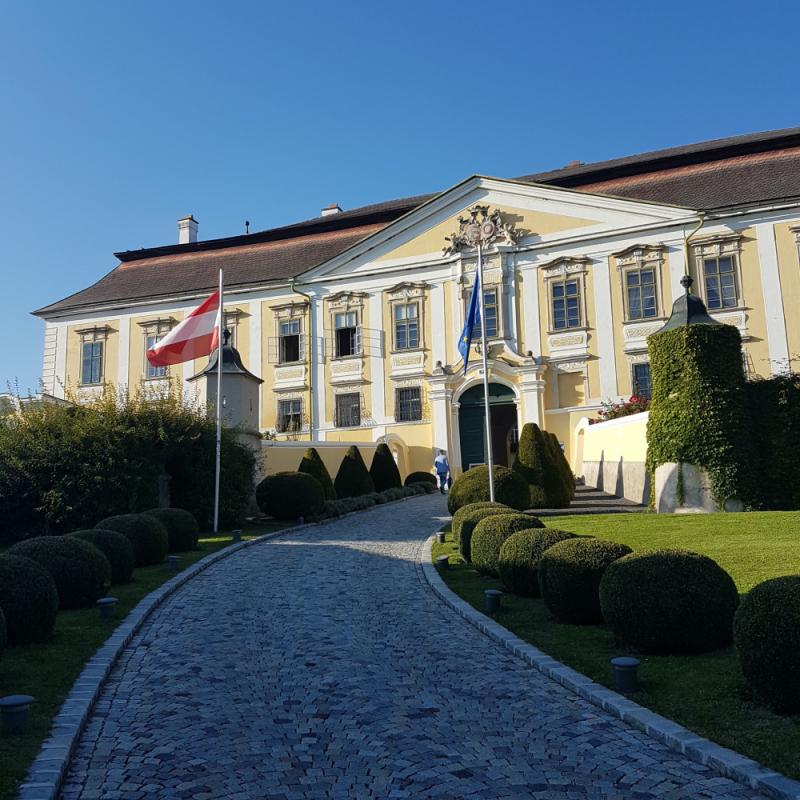
Photo: Sue Tolson
Ried Heiligenstein is the holy grail for Kamptal Riesling, while Ried Lamm is one of the best Grüner Veltliner vineyards, and I should perhaps say a word about the Tradition wines, which are ‘an ode to the winemaking style … employed at Gobelsburg in the early 19th century’, when the wines were racked frequently to allow them to ‘breathe’ and develop, just like humans, with the cellar master ‘teaching’ the wine. This rather contradicts the ‘modern’ idea that wine is made in the vineyard, not the cellar, as great wines are clearly made in both!
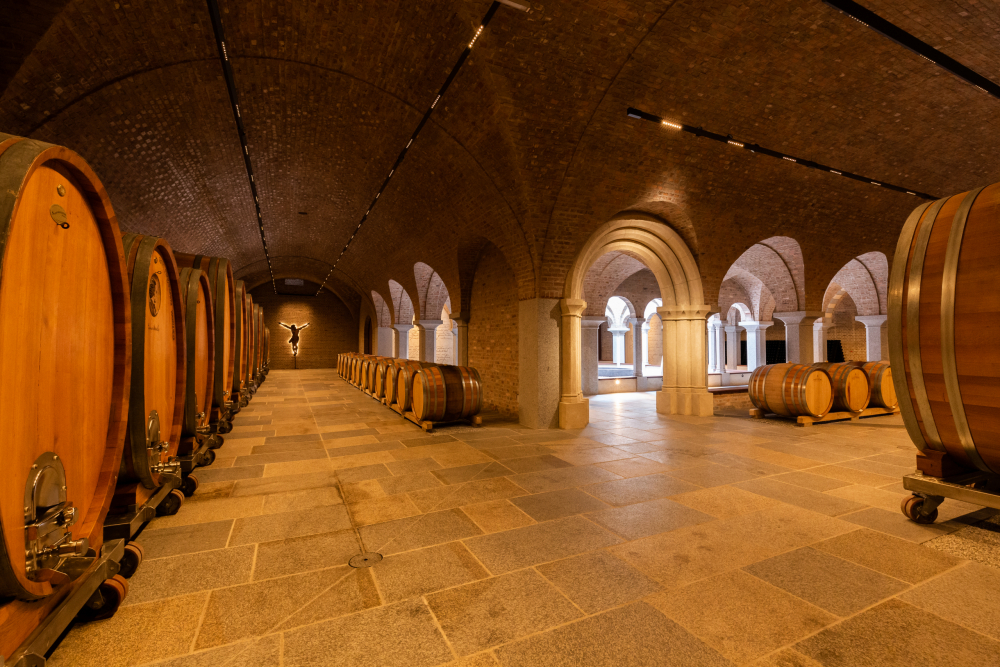
We also got to try another very special wine that evening, served on entry to the new cellar, the Tradition Heritage 50 Jahre, which was created to mark this amazing anniversary. The wine is a blend of wines from 50 vintages going back to the 1970s. It was also made in symbolic numbers – 1,171 six-bottle cases and 850 magnums, which naturally rapidly sold out. It was an immense privilege to be able to taste this wine, fusing the last 50 years into a delicious liquid to be savoured! So I hope that the schloss, winery and new cellar endures, not just for the 500 required by Michael from the architect, but at least another 850! And, of course, that great wines continue to be aged there.



